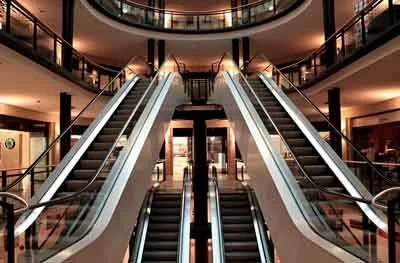Building Automation: A Conductor's Guide to Energy Efficiency

In the ever-growing symphony of a building's operation, energy consumption plays a critical role. However, left unmanaged, this crucial element can quickly become a discordant note, driving up costs and jeopardizing environmental well-being. Building Automation Systems (BAS) emerge as the conductor, harmonizing various building systems – lighting, HVAC, security – to achieve a sustainable and cost-effective performance.
Visit Our Building Automation Study Course
This article examines the heart of building automation, exploring how it tackles the challenge of energy efficiency through a range of features and applications:
The Smart Lighting Maestro: Traditional lighting systems often resemble a stuck record, illuminating unoccupied spaces and wasting valuable energy. BAS integrate with occupancy sensors, acting as a conductor who detects the presence of an audience and adjusts the lighting levels accordingly. This not only reduces energy consumption but also extends lamp life, leading to further financial savings. Additionally, BAS can be programmed to utilize natural daylight whenever possible by dimming electric lights or raising window blinds, ensuring a more dynamic and energy-efficient performance.
The HVAC Virtuoso: Heating and ventilation systems can be a building's biggest energy guzzlers. Building automation systems offer sophisticated temperature control features that ensure occupant comfort while minimizing energy waste. Programmable thermostats, akin to skilled performers, can be set to adjust temperatures automatically based on occupancy schedules and external weather conditions. BAS can also integrate with demand response programs, allowing buildings to strategically reduce energy consumption during peak demand periods, similar to an orchestra adjusting its volume during a dramatic crescendo. This collaboration with utilities translates to financial incentives, rewarding buildings for their sustainable practices.
Optimizing Ventilation for a Healthy Performance: Ensuring proper ventilation is crucial for a healthy building environment, but traditional systems can sometimes overplay their hand, wasting energy. BAS, acting as a ventilation conductor, optimizes strategies based on real-time occupancy data and CO2 (carbon dioxide) levels. By utilizing sensors to monitor CO2 concentration, a key indicator of occupant presence, BAS can adjust ventilation rates to ensure adequate air quality without unnecessary energy consumption. This approach not only saves energy but also maintains a healthy and comfortable environment for building occupants.
Harnessing the Power of Data Analytics: The Maestro's Score Modern BAS are equipped with powerful data analytics capabilities, akin to the conductor analyzing the score. These systems collect and analyze data from various sensors throughout the building, providing valuable insights into energy consumption patterns. Facility managers, empowered as informed conductors, can leverage this data to identify areas of high energy use, prioritize improvements, and track the effectiveness of implemented energy-saving strategies. This data-driven approach allows for continuous optimization, ensuring the building's energy performance remains a harmonious composition.
Beyond Efficiency: A Symphony of Additional Benefits Building automation offers a multitude of benefits beyond just energy efficiency, creating a compelling case for investment:
Enhanced Comfort and Productivity: BAS can personalize temperature, lighting, and air quality settings based on occupancy and preferences. This not only leads to increased occupant comfort, akin to a well-rehearsed performance, but also has the potential to boost productivity by creating a more pleasant and stimulating work environment.
Improved Building Operations and Maintenance: BAS can automate routine tasks like equipment monitoring and diagnostics, enabling proactive maintenance and faster response times to potential issues. This translates to reduced downtime, extended equipment life, and improved overall building operational efficiency, ensuring a smooth and uninterrupted performance.
Enhanced Security and Safety: BAS can be integrated with security systems like access control, video surveillance, and fire alarms, providing a comprehensive security solution. Building automation empowers facility managers with centralized control and real-time monitoring capabilities, enhancing overall building security and safety, ensuring the peace of mind of the audience (occupants).
Remote Monitoring and Management: Modern BAS offer remote access features, allowing facility managers to monitor and manage building systems from anywhere with an internet connection. This facilitates proactive management and enables swift responses to any issues that may arise, minimizing disruption to building operations, similar to a conductor addressing an unexpected cough from the audience.
Building the Case for Building Automation: A Cost-Effective Investment
While the initial investment cost associated with building automation systems can be a barrier for some, the long-term benefits outweigh the initial expense. Studies have shown that BAS can lead to energy savings of up to 30%, with a return on investment (ROI) typically achieved within a few years. Additionally, the long-term cost savings associated with reduced maintenance needs, extended equipment life, and potential utility rebates further strengthen the economic viability of BAS implementation.
The Road to a Sustainable Future: A Harmonious Finale
Building automation represents a significant step towards a more sustainable future for the built environment. By optimizing energy consumption and promoting responsible resource utilization, BAS contribute to reducing greenhouse gas emissions and mitigating climate change. Furthermore, building automation systems pave the way for the integration of renewable energy sources like solar and wind power. This integration allows buildings to further reduce their reliance on traditional energy sources and contribute to a cleaner and more sustainable future.
Looking Ahead: The Encore
The future of building automation systems is brimming with exciting possibilities. As technology continues to evolve, we can expect to see BAS become even more sophisticated and impactful:
The Internet of Things (IoT) Symphony: The increasing presence of IoT devices in buildings opens doors for seamless integration with BAS. Imagine a network of smart thermostats, lighting fixtures, and appliances all communicating with the BAS to create a truly intelligent and responsive building environment. This level of integration has the potential to further optimize energy consumption, personalize occupant experiences, and enhance overall building performance.
The Power of Artificial Intelligence (AI) and Machine Learning (ML): AI and ML will play a significant role in the future of BAS. These technologies can analyze sensor data to predict potential equipment failures, enabling proactive maintenance and minimizing downtime. Additionally, AI can be used to personalize building settings based on occupant preferences and real-time conditions, leading to an unparalleled level of comfort and efficiency.
Focus on Occupant Well-being: The future of BAS will place an even greater emphasis on occupant well-being. Biometric sensors and advanced data analytics will allow BAS to personalize environments based on individual needs. For example, BAS could adjust lighting levels and temperature to optimize occupant alertness and focus throughout the workday. This focus on human-centric design will further enhance occupant comfort and potentially lead to increased productivity and satisfaction.
Building a Sustainable Future, One Note at a Time
Building automation systems represent a powerful tool for creating a more sustainable future for the built environment. By harmonizing energy efficiency, occupant comfort, and responsible resource utilization, BAS contribute to a more responsible and environmentally friendly approach to building management. As technology advancements continue, the role of BAS as the conductor of a thriving and sustainable workplace will only become more prominent.
Building Automation – The Maestro of a Sustainable Symphony
In the ever-changing world of building management, building automation systems serve as a vital conductor, orchestrating a harmonious performance of energy efficiency, occupant comfort, and environmental responsibility. By leveraging the power of technology and data analytics, BAS empower facility managers to create a sustainable and cost-effective building environment. As we move towards a future focused on responsible resource utilization and occupant well-being, building automation systems will continue to play a critical role in building a symphony of a sustainable future.









